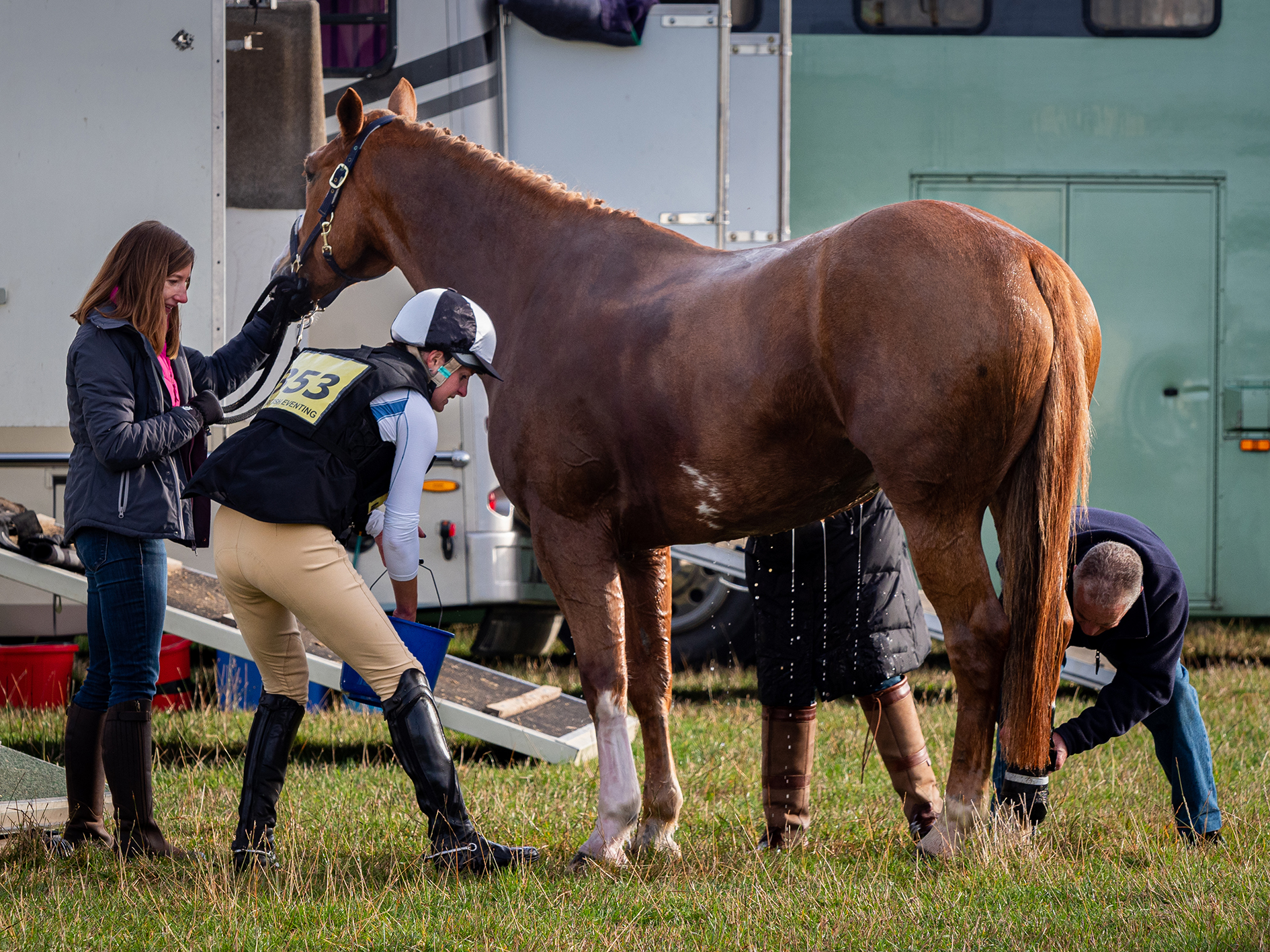Posted: 26th June 2020 | Back to news feed

Everyone knows that during exercise a horse’s body temperature increases, but do you know how to bring it back down again? The higher the intensity or duration of exercise, the higher the temperature will go. Exercise, temperature and humidity are the three factors that cause a horse’s core temperature to rise.
Naturally horses and humans have developed some clever ways to try and keep the temperature from rising to a dangerous level.
Sweating is one way to cool down, as the sweat evaporates from the skin, the skin’s temperature drops but the higher the humidity the less effective this is.

Credit: Ian B photography
When a horse is cantering or galloping at a fast pace, such as when eventing or racing, the air rushing past helps the sweat to evaporate quickly and is actually very effective at cooling the skin. It is when a horse stops that the heat can suddenly hit them and this is the most important time to cool them down quickly, known as ‘aggressive cooling’ or ‘rapid cooling’.
Following strenuous exercise and especially following a cross-country round it is of paramount importance that the horse’s core temperature and heart rate is brought down quickly and effectively to avoid unnecessary strain on the heart, muscles and respiratory system.
How to Cool a Horse Effectively
Having a good ‘pit crew’ or support team is crucial. The more hands on deck the quicker the horse’s temperature can be brought down and the quicker the horse can begin the recovery process.
Make sure everyone knows their role - one person to lead the horse, two people washing down, one on each side of the horse and one person topping up the buckets of water.
When I am eventing, I have a very slick system in place and masses of buckets all full, ready and waiting at the lorry for when the horse returns from cross-country. I have several large buckets that the smaller, normal sized buckets can be plunged into and refilled instantly.
In particularly hot weather I keep the buckets in the shade and even add ice packs to the water. Darker coloured buckets absorb the sunlight and heat the water - great if it’s not a very warm day, counterproductive on a hot day.
Remove the saddle and apply copious amounts of water to the horse, the more water the better, large sponges that absorb a lot of water are great for this purpose. Squeeze the sponge out over the horse quickly and then dunk the sponge and repeat, or tip the bucket of water directly over the horse.
Some horses don’t appreciate a bucket full of water poured over them at once, so do whatever is best for your horse. Watering cans can be quite useful in this instance.
Focus on areas with large blood vessels such as the neck and inner thighs, or areas of large muscle mass such as the neck, shoulders and the hind quarters.
It is essential that the horse is kept gently moving; this provides air flow across the skin aiding the cooling process and helps to prevent the build-up of lactic acid, which can lead to azoturia. Where possible try to keep the horse in the shade.
Stripping tack and boots off should be done as and when appropriate for each individual horse. Some horses are better walked in their bridles until their adrenaline levels have dropped.
I prefer to take boots off as quickly as possible but leave over-reach boots on while the horse still has studs in, other people leave boots on and pour cold water down the legs to cool the legs and remove excess heat that way. Modern cross-country boots offer much better airflow so keeping legs cool with boots on is easier.
Once the boots are removed I use cold pack boots to apply compression and cold therapy to the legs.
It is important to offer your horse a drink; it is a myth that drinking immediately after exercise is dangerous. The electrolytes that are lost as the horse sweats can be replaced in feed or water but always offer normal water as well, as horses can be put off from drinking entirely if their water smells or tastes different.
Once the horse’s temperature, heart rate and breathing are back to normal, they can be allowed to eat, grazing in-hand is ideal. At this point it is important not to allow the horse to get cold, especially if there is a strong breeze. A thin, cooler rug can be put on and then monitor the horse’s temperature and the conditions, another rug may need to be added later to prevent the horse catching a chill.
Harriet is available for dressage, show-jumping and cross-country lessons at her base near York.
To find out more call Harriet on (07795) 562745 or visit www.harriet-morris-baumber.co.uk
The Equestrian Index newsfeed is compiled from articles submitted by advertising members and expresses the opinions of those members. Watsons Directories Ltd shall not be held liable for any inaccuracies or mis-statements therein.
